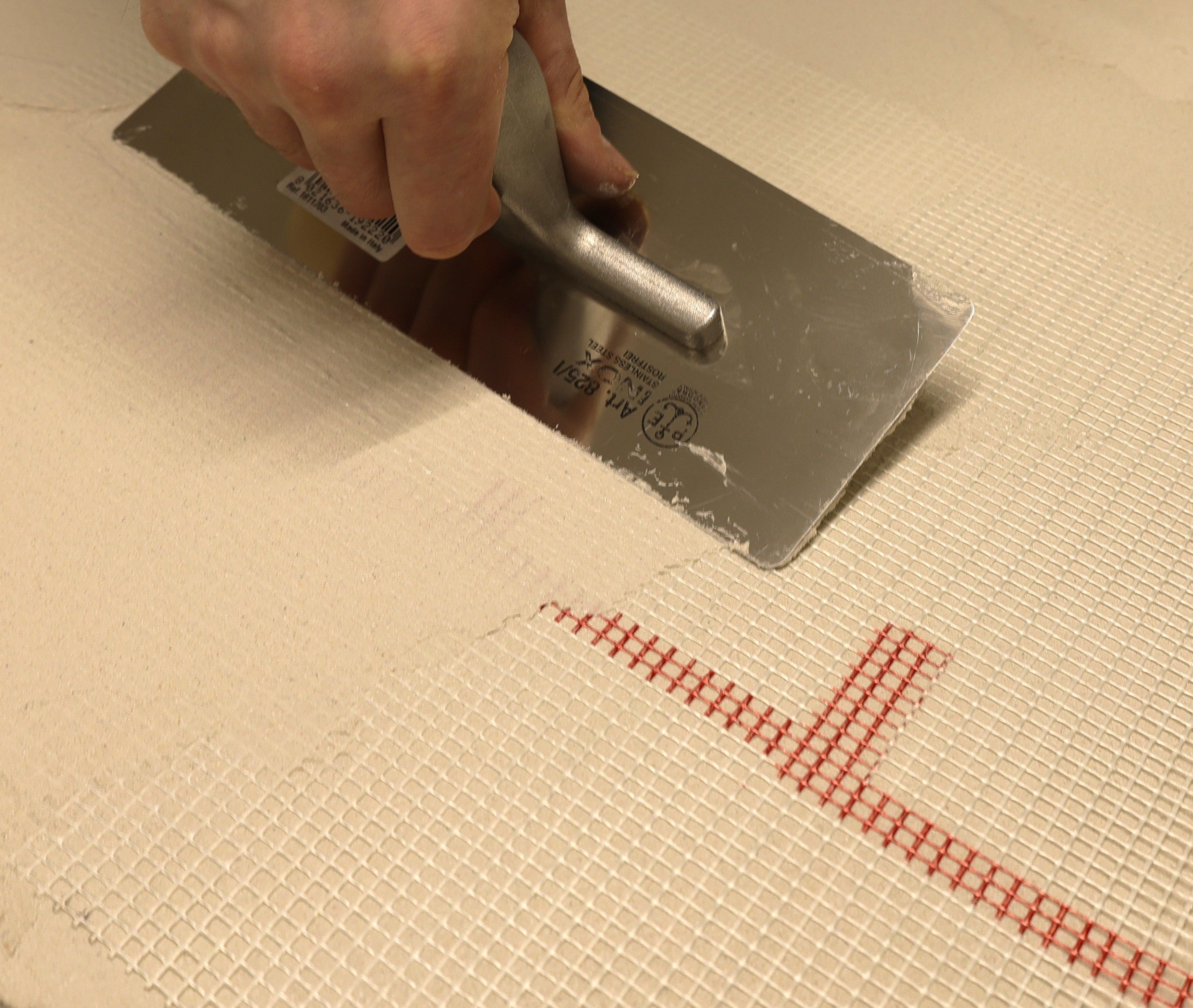Is Microcement Difficult to Apply?

Share
- Bathroom
- Flooring
- Home Decor
- Microcement
- Microcement Application
- Microcement Floor
- Minimalist
- Water-resistant
Microcement, as a multi-layer coating system, can get very technical when it comes to the application, which would be challenging for anyone who has not worked with it before. Some compare it to Venetian plaster, and whilst their decorative coat is similar, Microcement has very specific instructions that ensure a durable and water-resistant finish, whereas Venetian plaster only serves decorative purposes.
We would only recommend trained professionals to apply it, as even small mistakes can cause big damages, and affect the functionality and longevity of the finish.
Why is Microcement more difficult to apply than Venetian plaster?
Here’s a breakdown of everything to consider when applying Microcement.
Preparation
Quality application starts with adequate surface preparation, and assessment. Depending on the the substrate, our Microcement comes with different primers, one for porous and one for non-porous surfaces. This ensures corect bonding of the material to the substrate, and prevents future damage.
It’s also important to ensure the substrate is clean, and even, and any imperfections are fixed.
Tips for Priming:
Double-check if you have the right primer for the substrate.
Let the primer dry completely, before continuing with the base coat.
Application
Tips for Mixing and Applying:
Follow our the exact mixing ratios.
Pay attention to the and instructions of the each component of the Microcement, always double-check and only mix what you’ll be able to use in a few hours, as some components start to harden right away.
Mix each component’s A and B thoroughly, ensure there are no lumps left.
Use the right tools, and use them carefully as the decorative coat can easily be burnished and create unwanted marks.
Follow the instructions, but don’t hesitate to ask us for advice before applying each coat or if you think something is not right. You can reach our Showroom at 0333 012 4396 between 8AM - 5PM, Monday to Friday or via our email, sales@imperaitalia.com.
If you took a course with us and would like a refresher, check out our full tutorial here!
Finishing
Tips for Sealing:
The final coat should be dry before applying the sealer.
Apply at least two coats of the sealer, and wait enough for it to be completely dry before any contact with water.
For Microcement applications, it will take a few days before it reaches maximum hardness and water resistance, therefore the waiting time after the application is crucial.
What to Consider When Applying Microcement?
Time and Patience:
Microcement needs a considered and careful application in order to benefit from the functional and practical benefits it offers. Plan enough time for the application, and don’t rush the process as each layer needs to be carefully applied and left to dry.
Skill Level:
We recommend that only people trained in the Microcement application apply it, as surfaces exposed to water can be damaged easily if the application was not done correctly.
To learn the application of Microcement, check out our beginner and advanced courses!
Quality of Materials:
Choosing a high-quality Microcement is crucial to get the finish and results you are after. Our Microcement, supplied by San Marco, has been developed and rigorously tested by one of the most established manufacturers in the industry and countless happy clients and applicators have nothing but good to say about the material.
Check out our Allover and Continuo Microcements!
Conclusion
The application of Microcement is quite technical, therefore, it is best left to people who have been trained to apply it or have extensive experience.
Aside from selling the material, we provide training for Microcement for beginner and advanced applicators as well, to ensure each project is a success!
